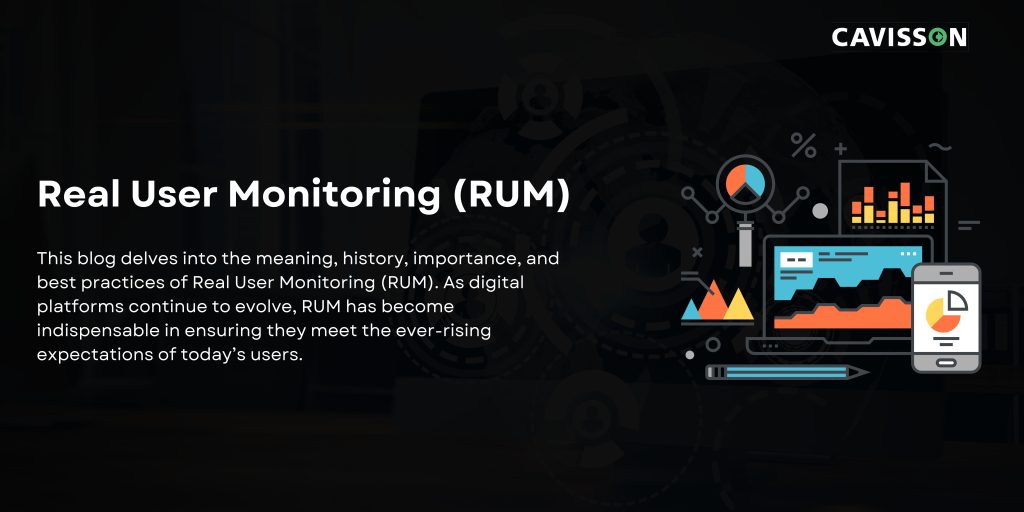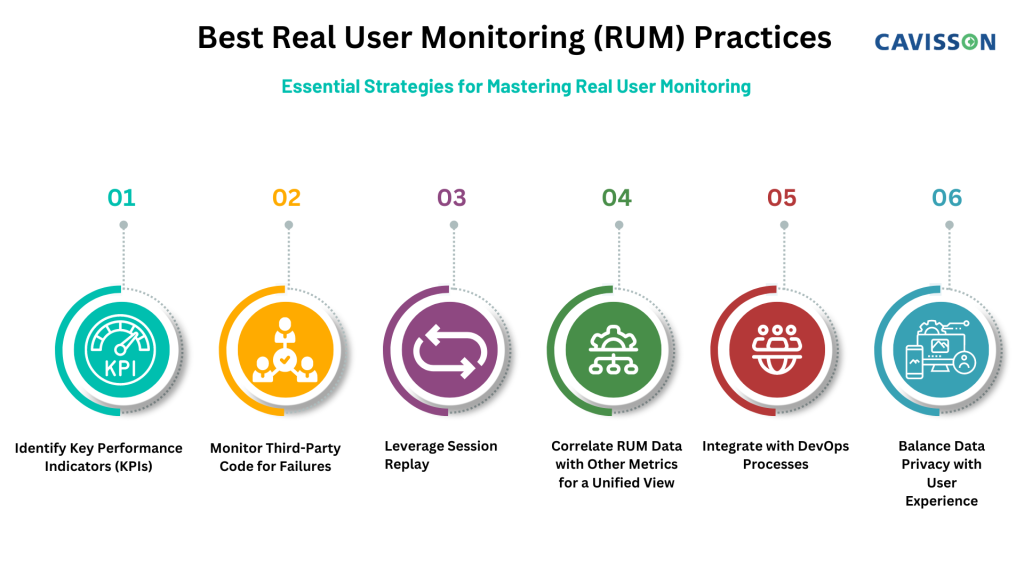
In today’s fast-paced digital world, where user expectations are higher than ever, delivering a flawless digital experience is no longer just a goal—it’s a necessity. Even the smallest delay or error can significantly impact user satisfaction, ultimately affecting your business’s bottom line. This is where Real User Monitoring (RUM) comes into play. RUM has become an indispensable tool for ensuring that your digital platforms consistently meet and exceed the demands of modern users.
In this blog series on Digital Experience Monitoring, we’ll explore key components like Real User Monitoring (RUM), Synthetic Monitoring, Customer Feedback, and Online Customer Experience. To kick things off, we’ll dive into the essentials of RUM, exploring its origins, significance, and best practices. With Cavisson Systems’ NetVision at the forefront of Real User Monitoring, we’ll show you how this powerful tool can provide deep insights into user behavior, helping you fine-tune your digital performance and enhance overall user satisfaction.
1. What is Real User Monitoring?
Real User Monitoring (RUM) is a technique that tracks and analyzes the interactions of real users with your website or application. Unlike traditional performance monitoring, which often focuses on server-side metrics, RUM captures data directly from the user’s browser or device. This provides a true-to-life view of your site’s performance in real-time, offering insights into page load times, user interactions, and other critical factors that affect the end-user experience.2. Why is Real User Monitoring Important?
In the digital age, user experience is a key driver of brand success. Users have little patience for slow-loading pages, broken links, or any form of disruption. Studies show that a significant percentage of users abandon websites that fail to perform well, and these negative experiences can lead to lasting reputational damage. RUM is crucial because it offers continuous, real-time insights into user behavior, enabling businesses to quickly address issues, optimize performance, and enhance the overall user journey.3. Real User Monitoring History
Real User Monitoring (RUM) has evolved from basic web analytics in the 1990s, which tracked page load times, to sophisticated tools that focus on real user experience. In the mid-2000s, RUM emerged to monitor how actual users interact with websites, offering insights beyond server-side metrics. By the 2010s, RUM became integral to Application Performance Management (APM), helping optimize user experience with features like session replay and real-time analytics. Today, RUM utilizes AI to provide proactive insights, ensuring businesses can deliver seamless digital experiences.4. Best Practices for Real User Monitoring
To fully leverage RUM with NetVision, consider the following best practices:❖ Identify Key Performance Indicators (KPIs)
To maximize the effectiveness of RUM, it’s important to focus on metrics that align directly with your business goals. For example, if your goal is to improve user experience, you might prioritize metrics like page load times or error rates. If increasing conversions is your target, you might track the completion of specific user actions, such as purchases or sign-ups. KPIs should offer clear, quantifiable measures of your progress, helping you identify both successes and areas for improvement.❖ Monitor Third-Party Code for Failures
Third-party code is integral to modern web applications but can also introduce potential points of failure. Monitoring the performance of this code is critical to ensuring it doesn’t negatively impact the user experience. RUM can help you detect issues with third-party scripts, allowing you to address problems quickly. Additionally, this monitoring can provide insights into how third-party code affects your application’s overall performance, enabling you to make informed decisions about optimizing, replacing, or collaborating with third-party providers for better results.❖Leverage Session Replay
Session replay is a powerful RUM feature that lets you see exactly what users experience during their interactions with your application. This tool is invaluable for uncovering issues that might not be evident from raw data alone. For instance, you may observe that users are struggling with a particular feature. By replaying their sessions, you can identify the exact points of friction and take corrective action to improve the user experience. Session replay also offers insights into user behavior, guiding your development process to meet user needs and expectations better.❖Correlate RUM Data with Other Metrics for a Unified View
While RUM provides significant insights, its real power is unlocked when combined with other metrics, such as server performance, application performance, and business metrics. This holistic approach allows you to pinpoint issues with greater accuracy. For example, if user satisfaction drops, correlating RUM data with server performance metrics can help determine if server latency is the culprit. By integrating these data sources, you can make more informed decisions and implement effective solutions to enhance overall performance.❖ Integrate with DevOps Processes
RUM plays a crucial role in DevOps by providing real-time data on user experience. Integrating RUM data into your DevOps processes ensures that changes or updates to your application are informed by actual user behavior. This proactive approach helps you avoid potential issues and ensures that updates genuinely enhance the user experience. Furthermore, RUM integration fosters better communication and collaboration across teams, allowing IT, development, and marketing teams to work together more effectively.❖ Balance Data Privacy with User Experience
Effective RUM implementation requires a careful balance between data collection and user privacy. Users highly value their privacy, and any perceived intrusion can erode trust. It’s essential to collect only the data you need and anonymize it to protect user identities. Transparency is key—inform users about what data you collect, why it’s collected, and how it will be used. By respecting privacy while gathering valuable insights, you can build trust and deliver a better user experience.
Conclusion
Real User Monitoring is indispensable in today’s digital world, ensuring that every interaction on your website or application is optimized for user satisfaction. By adhering to best practices and fully leveraging the capabilities of RUM, your business can reach new heights in digital performance. With Cavisson Systems’ NetVision, you have a powerful tool to deliver flawless user experiences, drive business success by giving you unparalleled visibility, and AI-driven root cause analysis.
Contact us today to check how Cavisson can transform your application’s performance.

